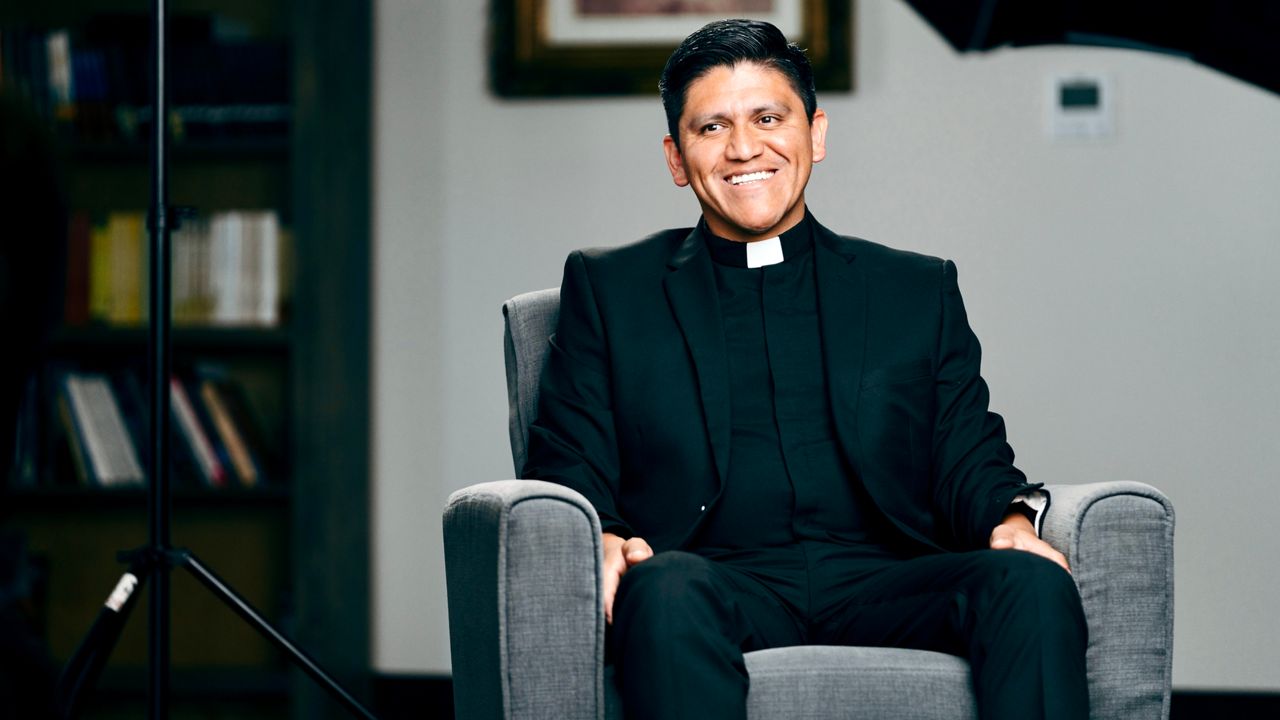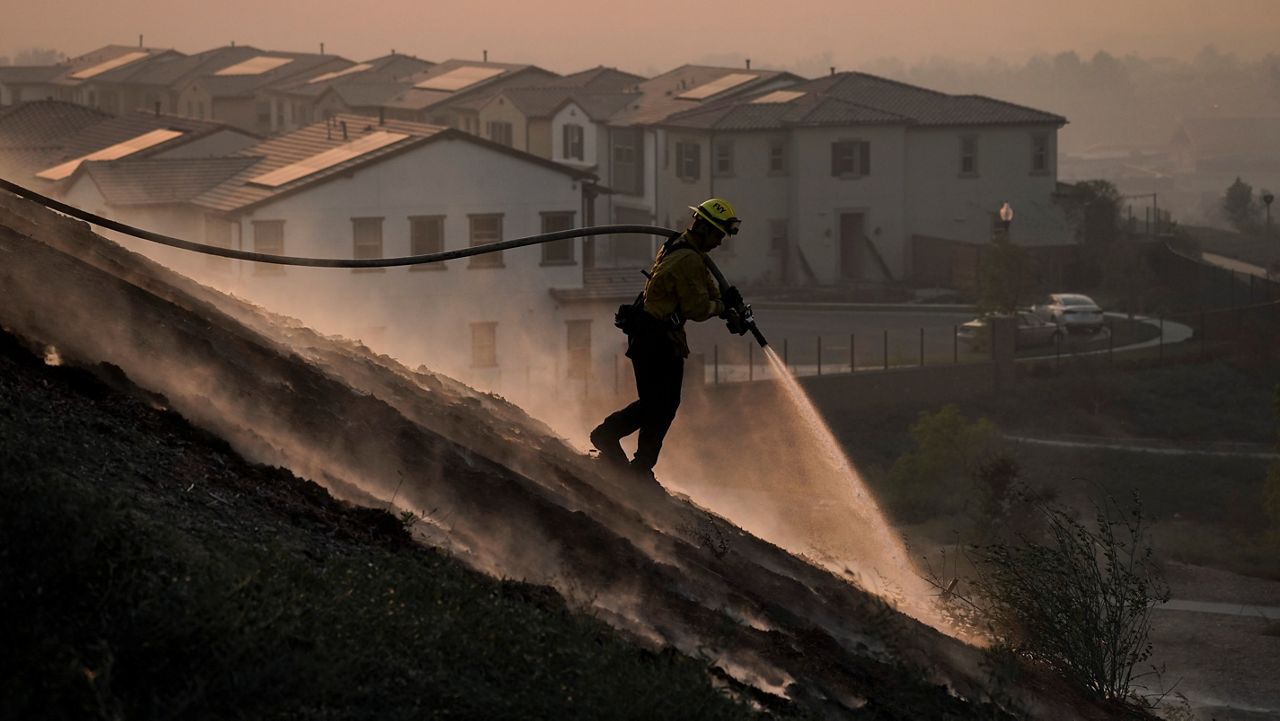ANAHEIM, Calif. — According to an economic impact study, Walt Disney Co.’s proposed expansion of the Disneyland Resort could lead to a massive economic windfall for the city, Orange County and the Golden State.
California State University Fullerton’s Dr. Anil Puri told a group of business and civic leaders Wednesday that if fully built, the Disneyland Forward rezoning project of the company’s land in Anaheim could generate more than $240 million in transient occupancy tax (ToT) - double from pre-pandemic times.
Additionally, it would help create thousands of direct and indirect jobs locally and across the region in the decades to come.
“When you utilize land, that is not being used in a more productive use, whether hotels, theme parks, whatever, it generates a lot of economic activity - jobs, labor income, tax revenue,” said Puri, the College of Business and Economics dean at Cal State Fullerton, to Spectrum News after the OC Forum event.
Disney hosted the OC Forum event at the Disney Grand Californian Hotel and Spa. The OC Forum is a non-partisan current affairs organization.
“This will increase jobs, increase wages, and tax revenue,” added Puri.
“This is a very unique, special, and advantageous benefit to the city of Anaheim, Orange County, and the entire state,” said Disneyland President Ken Potrock.
The release of the independent fiscal analysis is the latest public relations push from Disney as they go to infinity and beyond to propel the approval of the Disneyland Forward rezoning project through the city council next year.
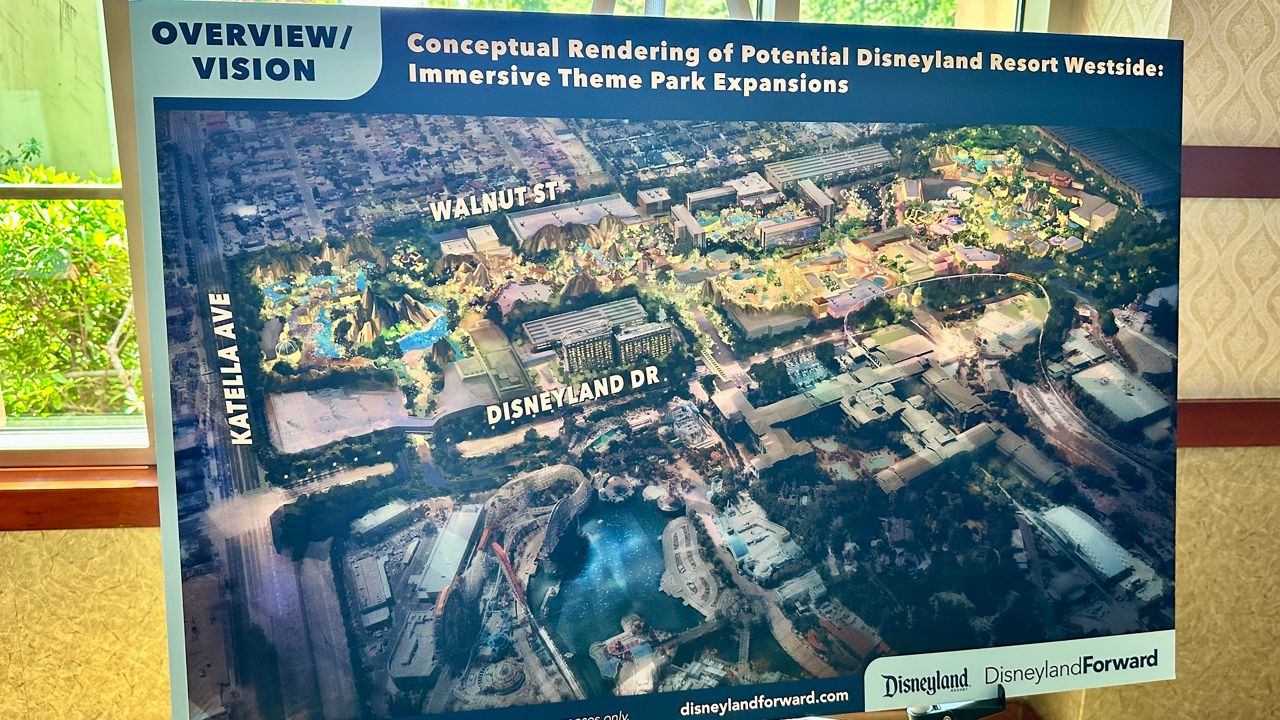
The project aims to rezone the 490-acre Disneyland Resort as mixed-use, allowing Disney greater flexibility in placing attractions, hotels, restaurants and other uses on their property.
The new zoning could clear the runway for expanding Disneyland and Disney California Adventure or opening a third gate.
Like most cities, Anaheim designates land parcels that determine what kind of use can be placed where.
Disney and Anaheim have a current master plan agreement created in the 1990s that helped pave the way for creating a second theme park, Disney California Adventure, a shopping area, Downtown Disney, and a new hotel, the Grand Californian Hotel and Spa.
But times have changed.
“From the 1990s to the 2020s, how consumers absorb and ingest entertainment has changed a lot,” said Potrock.
Rather than build hotels in the hotel-designated zone, attractions in the theme park designation, and shopping or restaurants in the retail area, Disney wants to integrate hotels, shopping and theme park attractions on the same site.
Rachel Alde, the vice president of Global Development at Disney, gave an example of the Fantasy Springs expansion at Tokyo Disneyland’s Tokyo DisneySea. Currently under construction, the new addition would allow visitors to stay inside a themed hotel, shop and visit attractions such as Rapunzel’s Forest or the Frozen Kingdom all in one area.
“It’s an immersive world,” said Alde.
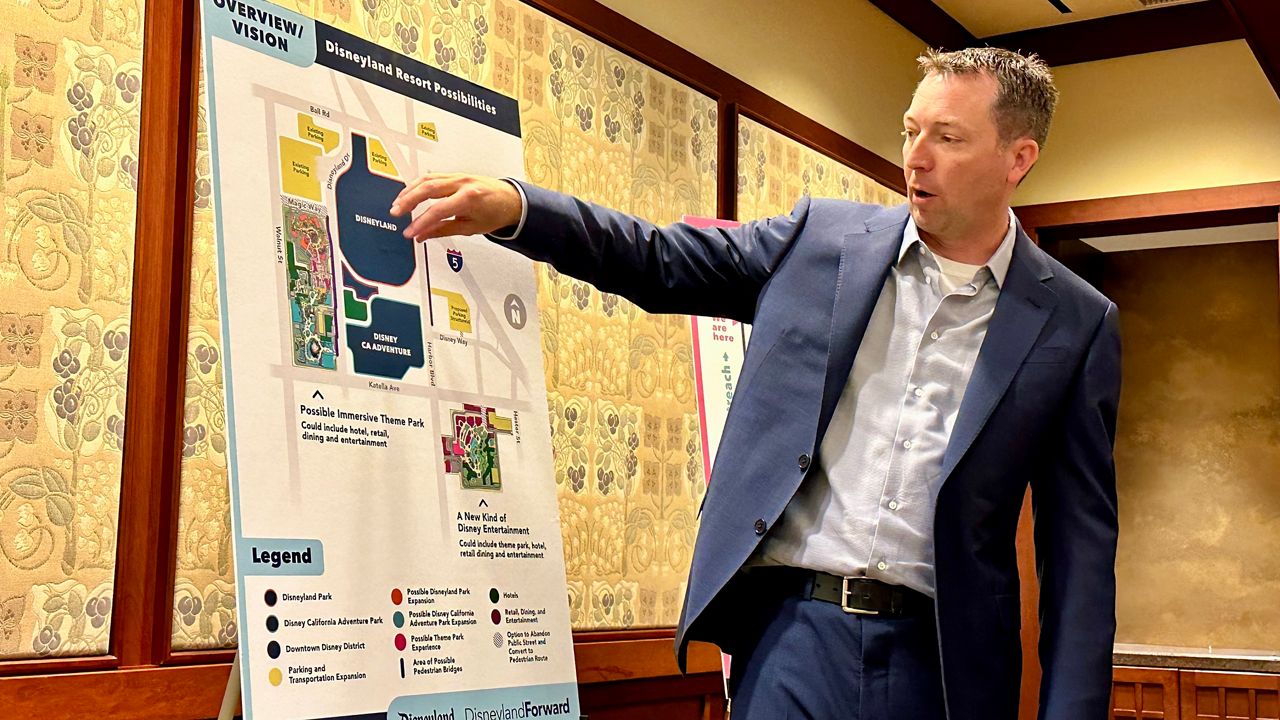
Joe Haupt, the CEO and president of Spectrum Development Group, which is assisting Disney with its plans, said the original approvals 23 years ago were wildly successful.
Disneyland, however, needs to look beyond the current framework and prepare for the next 10, 20, or 30 years.
“We still have about half of that square footage of the park left to build, but the way we want to use that space today is different than it was 23 years ago,” said Haupt to Spectrum News. “Times have changed, and also, we would like to put some land to better use. It’s about optimizing the real estate and the density we have approved.”
Parts of the rezoning include the possibility of building a pedestrian bridge over Harbor Boulevard and/or Disneyland Drive to better funnel visitors to and from their existing or proposed parking lots.
The proposed plans also include rezoning the current Simba Lot, currently used as parking for Downtown Disney, and the Toy Story parking lot south of the central Disneyland Resort.
Mass transportation, such as a new Monorail system linking the different areas, is not on the table, said Haupt.
Anaheim spokesperson Mike Lyster, who was in attendance, said the city expects the project’s environmental impact report to come out this summer. The City Council could vote on the project next year.
Puri, the economist, using his economic model, said the project’s economic impact could be profound for the city.
He said for every $1 billion invested in the Disneyland Resort, the city could see $11 million in tax revenue from construction in four years and $15 million annually once whatever attraction begins operation.
A 400-room Disney-themed hotel, for example, could generate $4 million during construction and $9 million annually in transient occupancy tax once it’s open, Puri said.
Anaheim currently has 152 hotels, most inside the resort district surrounding the Disneyland Resort. The city charges a nightly 15% bed tax.
That bed tax helps fill most of the city’s coffers and allows the city to hire new police officers and firefighters, fix roads, and build parks. Last year, the city received about $170 million in bed taxes.
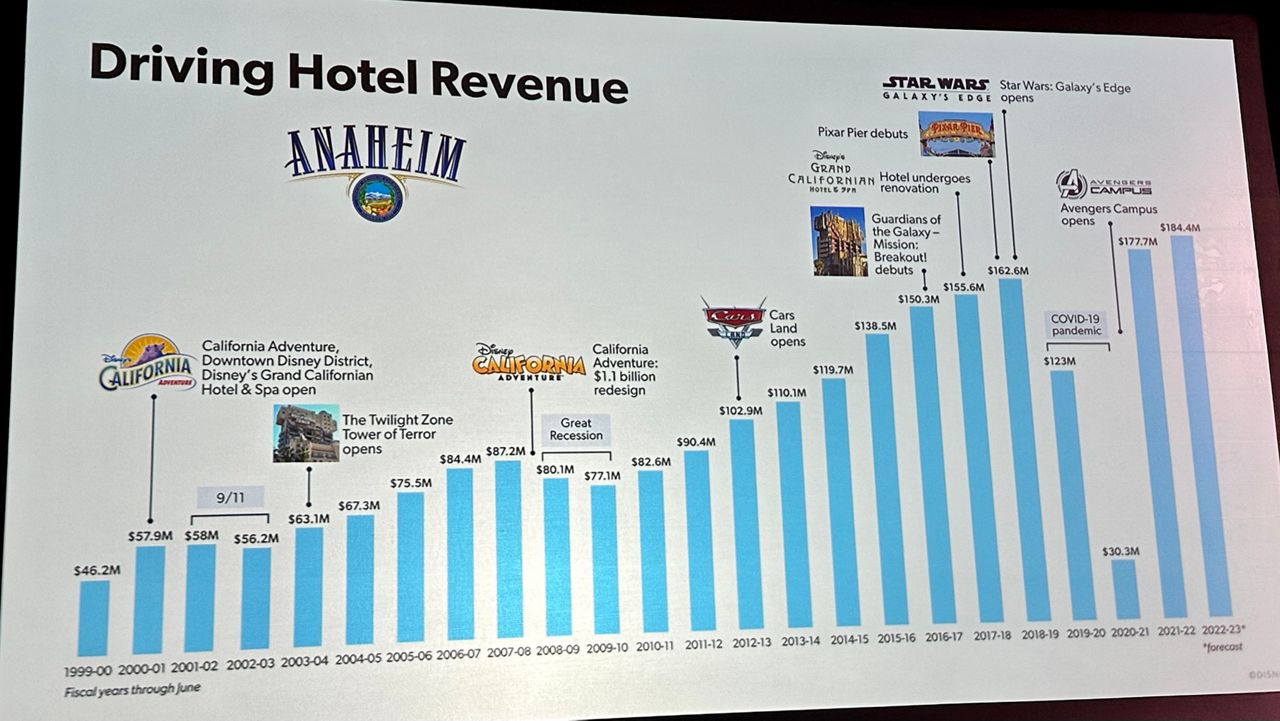
Haupt said historically, the city often sees a spike in ToT revenue the following year or years after Disney builds a new attraction at Disneyland Resort.
“The main headline is the expansion of the Disneyland Forward entails developing land that Disneyland already has, and residents will see substantial benefits in terms of jobs, wages and tax revenue,” said Puri.
Potrock reminded attendees that the economic impact analysis only looked at what $1 billion in investments could do for the city and the region.
“We’re going to invest multiple billions,” he said.








